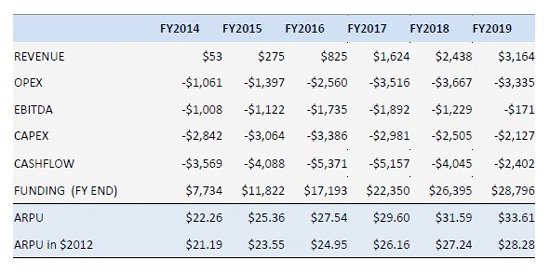After watching Malcolm Turnbull and Tony Abbott announce the Coalition’s NBN alternative, I’m left wondering who decided to create such a hollow policy with few details on costs.
The policy was announced at a heavily media managed event at Sydney's Fox Studios, where journalists were offered copies of The Daily Telegraph instead of policy papers.
Alarm bells started ringing when Turnbull began to present graphs and figures that were out of line with reality. He claimed the NBN would cost $90 billion and would never be completed — and in the same breath stating that the Coalition’s $30 billion VDSL alternative was the right answer to Australia’s ailing copper network.
At the press conference, Turnbull and Abbott looked decidedly fearful. Turnbull seemed far out of his depth. Abbott hovered over his shoulder, jumping in to assure everyone the Coalition would sell off the NBN as soon as it’s finished.
This betrays his real intention; to send Australia back to the position we are in now with little investment from private enterprise in such a vital piece of infrastructure.
The first question put to Turnbull — “How long will the copper network last?” — was met with aggression and derision, and wasn't answered. If the Coalition wants to claim their alternative policy isn't completely useless, they should have this data at hand. It’s like planning a road and saying “we’ve not projected how many cars will eventually use it”.
So what does the policy actually include and are there any facts to support it? Let's look at some of the Coalition's claims:
The government's NBN will cost $90 billion, they allege. Nowhere in the policy papers is this figure supported. It is referenced in the Coalition's “background documents” — which after some digging I found buried on Turnbull's website (mirror).
The $90 billion figure comes from four poorly formed assumptions: Revenue growing slower than forecast; Fibre to the premises (FTTP) costing more than forecast; The network taking 50 per cent longer than forecast; and more people going wireless than forecast.
None of these scenarios match up with ABS statistics, NBN Co annual reports, or actual build speed. As far as revenue is concerned, fixed line services are increasing at a steady rate and the costs of running networks are coming down. Prices for deploying fibre networks have gone down over recent years, unlike copper, which is always rising due to the price of raw materials rising.
While it will take longer to deploy the NBN, it will not take another five years. This point may be based around truth, but the assumption is far from reality. As far as increasing costs of deployment, this does not match up with reality at all.
Looking at ABS statistics, wireless internet takeup is rising — however, they are ancillary services in addition to fixed line. Assuming that people will go with wireless instead of 100Mbps (or 1Gbps) fibre is ignoring the current and future projections for the telecommunications sector.
If the Coalition were to apply these same assumptions to their own policy, there would be little difference in pricing — just as there is with more rigourous projections of both policies. All assumptions are worst case scenarios with added misinformation, most being based on out-of-date data from conservative think tanks. The real costs will be closer to the projections given for both plans.
So where does that leave the Coalition policy? Well, not in a great position. They are going to hobble Australia’s telecommunications to save less than $15 billion and two years. It's probably the most myopic plan I’ve come across — and I’ve worked for Telstra.
The Coalition's alternative ignores the lifespan of copper wires, with no cheap avenue to upgrading the network — and that's not all. In the background documents there is no breakdown of operational expenditure, just unreferenced costs that ignore the $1 billion in maintenance costs for a copper network — and the $300 million required to power the nodes, which would otherwise not exist in a FTTP network.
If we take this into account, that’s another $7.8 billion in expenditure for the Coalition’s alternative. There’s also some funny mathematics going on, with final costs being one half of what columns add up to. Perhaps Hockeynomics operates under different rules, but even a primary school student with a calculator can see these numbers just don’t add up:

After reading both the policy and the hidden background document, it's clear the Coalition's alternative NBN is not a policy, but a mix of misinformation, lies, and outright smear. There’s little actual policy, mostly just attacks on NBN Co and the current Labor government. It doesn’t take a genius to see that these documents are designed to deceive voters into thinking that fibre to the node will somehow cost less.
When you compare a network sidegrade (not upgrade) to copper-wired VDSL costing $30 billion, which is already out-of-date, and an upgrade to FTTP estimated to cost $21 billion and another few years, it's clear that the Coalition’s plan is not the cheaper alternative. It will not take less time and it will not deliver the bandwidth required for Australia to be a first class digital economy.
Donate To New Matilda
New Matilda is a small, independent media outlet. We survive through reader contributions, and never losing a lawsuit. If you got something from this article, giving something back helps us to continue speaking truth to power. Every little bit counts.



